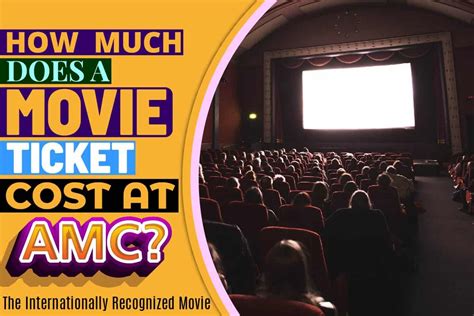
AMC Theatres is facing significant backlash over its newly announced pricing strategy, “Sightline,” which charges different prices for movie tickets depending on seat location within the auditorium. The initiative, set to roll out nationwide, has ignited a firestorm of criticism, with moviegoers labeling the move as “excessive” and accusing the theater chain of price gouging.
AMC’s “Sightline” initiative divides seating into three categories: “Value Sightline,” “Standard Sightline,” and “Preferred Sightline.” Value Sightline seats, located in the front row and potentially offering obstructed views, will be priced lower than standard tickets. Standard Sightline seats, which are the typical seats in the auditorium, will be sold at the regular ticket price. Preferred Sightline seats, positioned in the middle of the auditorium, considered the “best” viewing locations, will command a premium price.
The program is already in effect at select AMC locations and will expand to all AMC theaters across the United States by the end of the year. AMC Stubs A-List members, the company’s subscription service, can reserve Preferred Sightline seats at no extra cost, while A-List members and AMC Stubs Premiere members can also receive discounts on Value Sightline tickets.
The announcement has been met with widespread condemnation on social media platforms. Many users have expressed concerns that the new pricing model disproportionately affects families and lower-income individuals, potentially making moviegoing an even less accessible form of entertainment. The move has been described as “a new low” and a blatant attempt to capitalize on consumer demand. Critics argue that charging extra for what are traditionally considered the best seats is inherently unfair, as those seats were previously available to everyone on a first-come, first-served basis.
AMC defends the “Sightline” initiative by stating that it’s designed to offer consumers more choice and control over their moviegoing experience. “Sightline at AMC more closely aligns AMC’s seat pricing with the varying levels of demand for different locations within our auditoriums,” the company said in a statement. “It’s all about choice and options.” The company points to similar pricing models used in other entertainment venues, such as concerts and sporting events, where premium seating often comes at a higher cost.
However, this justification has failed to quell the outrage, with many arguing that movie theaters should not be compared to these other entertainment formats. Moviegoing is often viewed as a more accessible and democratic form of entertainment, and the introduction of tiered pricing threatens to erode this perception.
The controversy surrounding “Sightline” highlights the ongoing challenges faced by movie theaters in the wake of the COVID-19 pandemic and the rise of streaming services. The industry is struggling to attract audiences back to theaters, and innovative pricing strategies are being explored as a way to boost revenue. However, as the reaction to “Sightline” demonstrates, such strategies must be carefully considered to avoid alienating customers and further damaging the industry’s reputation.
AMC’s CEO Adam Aron has been known for his unconventional approaches to revitalizing the theater chain, including embracing meme stock investors and exploring partnerships with other entertainment companies. While some of these initiatives have been successful, “Sightline” appears to be a misstep, at least in terms of public perception. The negative publicity surrounding the program could potentially outweigh any financial benefits it generates.
The implementation of “Sightline” also raises questions about accessibility and inclusivity. By charging extra for Preferred Sightline seats, AMC is effectively creating a two-tiered system, where those who can afford to pay more get the best viewing experience. This could further marginalize lower-income individuals and families, who may already be struggling to afford the cost of movie tickets and concessions.
Moreover, the program could potentially lead to disputes and conflicts within the theater. Moviegoers may disagree about the quality of different seats, leading to arguments and complaints. Theater staff may also be burdened with the responsibility of enforcing the new pricing rules and resolving seating disputes.
The long-term impact of “Sightline” on AMC’s business remains to be seen. It’s possible that the program will generate additional revenue and attract a new segment of customers who are willing to pay extra for premium seating. However, it’s also possible that the backlash will continue to grow, leading to boycotts and a decline in attendance.
Ultimately, the success of “Sightline” will depend on how well AMC can communicate its value proposition to customers and address their concerns about fairness and accessibility. The company needs to convince moviegoers that the new pricing model is not simply a cynical attempt to extract more money from them, but rather a genuine effort to improve the moviegoing experience for all.
In-Depth Analysis:
The “Sightline” initiative can be viewed through several lenses, including economic, social, and psychological perspectives.
Economic Perspective:
From an economic standpoint, “Sightline” represents an attempt by AMC to implement a form of price discrimination. Price discrimination occurs when a seller charges different prices to different customers for the same product or service. In this case, the “product” is a movie ticket, and the price varies depending on the location of the seat.
Price discrimination can be a profitable strategy for businesses, as it allows them to capture more consumer surplus. Consumer surplus is the difference between the amount a consumer is willing to pay for a product and the amount they actually pay. By charging different prices, AMC can extract more of this surplus from customers who are willing to pay more for Preferred Sightline seats.
However, price discrimination can also be risky. If customers perceive the pricing scheme as unfair or exploitative, they may choose to boycott the business or switch to a competitor. This is precisely the risk that AMC is facing with “Sightline.”
The success of “Sightline” will depend on whether AMC can convince customers that the premium prices for Preferred Sightline seats are justified by the improved viewing experience. If customers believe that the difference in viewing quality is significant enough to warrant the extra cost, they may be willing to pay the higher price. However, if they perceive the difference as negligible, they are likely to resist the price increase.
Social Perspective:
From a social perspective, “Sightline” raises concerns about equity and accessibility. By charging extra for Preferred Sightline seats, AMC is effectively creating a two-tiered system, where those who can afford to pay more get the best viewing experience. This could further marginalize lower-income individuals and families, who may already be struggling to afford the cost of movie tickets and concessions.
The program could also exacerbate existing social inequalities. For example, families with young children may be more likely to prefer Preferred Sightline seats, as they may want to be closer to the screen and have a better view of the movie. However, these families may also be more budget-conscious and less willing to pay extra for premium seating.
The implementation of “Sightline” could also lead to social friction within the theater. Moviegoers may disagree about the quality of different seats, leading to arguments and complaints. Theater staff may also be burdened with the responsibility of enforcing the new pricing rules and resolving seating disputes.
Psychological Perspective:
From a psychological perspective, “Sightline” taps into consumers’ perceptions of value and fairness. Consumers are often willing to pay more for products or services that they perceive as being of higher quality or offering a better experience. However, they are also sensitive to issues of fairness and may react negatively to pricing schemes that they perceive as being exploitative or discriminatory.
The success of “Sightline” will depend on how well AMC can manage these psychological factors. The company needs to convince customers that the premium prices for Preferred Sightline seats are justified by the improved viewing experience and that the pricing scheme is fair and transparent.
AMC can achieve this by providing clear and accurate information about the differences between the different seat categories. The company should also be transparent about how the prices are determined and why premium seats command a higher price.
Additionally, AMC should be sensitive to the concerns of lower-income individuals and families. The company could offer discounts or promotions to make Preferred Sightline seats more accessible to these groups.
Background Information:
AMC Theatres is the largest movie theater chain in the world, with over 900 locations and 10,000 screens worldwide. The company has a long and storied history, dating back to 1920, when the Dubinsky Brothers began their entertainment journey with a single theater in Kansas City.
In recent years, AMC has faced significant challenges due to the rise of streaming services and the impact of the COVID-19 pandemic. The company has been forced to close theaters, lay off employees, and take on significant debt.
To address these challenges, AMC has been exploring a variety of strategies to boost revenue and attract audiences back to theaters. These strategies include:
- Investing in premium theater formats, such as IMAX and Dolby Cinema.
- Offering a subscription service, AMC Stubs A-List, which allows members to see multiple movies per month for a fixed price.
- Partnering with other entertainment companies, such as Netflix, to offer exclusive screenings of their films in theaters.
- Embracing meme stock investors and engaging with them on social media.
- Introducing new pricing strategies, such as “Sightline.”
The “Sightline” initiative is the latest in a series of efforts by AMC to adapt to the changing landscape of the entertainment industry. However, as the reaction to the program demonstrates, not all of these efforts are successful.
Expanded Context:
The controversy surrounding “Sightline” is part of a broader debate about the future of movie theaters. The industry is facing a number of challenges, including:
- The rise of streaming services, which offer consumers a convenient and affordable way to watch movies at home.
- The increasing cost of movie tickets and concessions, which makes moviegoing less accessible to lower-income individuals and families.
- The changing demographics of movie audiences, with older audiences becoming increasingly reluctant to return to theaters.
- The competition from other forms of entertainment, such as video games and social media.
To survive and thrive in this challenging environment, movie theaters need to adapt and innovate. They need to offer consumers a compelling reason to leave their homes and spend money on a moviegoing experience.
This could involve investing in premium theater formats, offering enhanced food and beverage options, and creating a more social and interactive experience. It could also involve experimenting with new pricing strategies, such as “Sightline.”
However, any changes must be carefully considered to avoid alienating customers and further damaging the industry’s reputation. Movie theaters need to strike a balance between generating revenue and providing a fair and accessible entertainment option for all.
Alternative Strategies:
While “Sightline” has generated considerable negative attention, AMC could explore alternative strategies to enhance revenue and customer experience without resorting to tiered seating pricing.
-
Enhanced Concessions: AMC could focus on improving the quality and variety of its concessions offerings. This could involve partnering with local restaurants or chefs to create unique and appealing food and beverage options. Premium concessions could justify a higher price point without creating a two-tiered seating system.
-
Themed Movie Nights: AMC could host themed movie nights or special events that cater to specific audiences. These events could include costume contests, trivia games, and pre- or post-screening discussions. These events could attract a wider range of moviegoers and generate additional revenue.
-
Improved Customer Service: AMC could invest in training its employees to provide better customer service. This could involve empowering employees to resolve customer complaints quickly and efficiently, and creating a more welcoming and friendly atmosphere. Improved customer service could enhance the overall moviegoing experience and encourage repeat business.
-
Loyalty Programs: Expanding and refining its AMC Stubs program to offer more compelling rewards and benefits could incentivize customers to visit more frequently. This could include offering discounts on tickets and concessions, priority access to screenings, and exclusive merchandise.
-
Partnerships: Collaborating with other businesses, such as local retailers or restaurants, to offer bundled deals or discounts could attract new customers and generate additional revenue. For example, AMC could partner with a local restaurant to offer a dinner-and-a-movie package.
-
Facility Upgrades: Investing in upgrades to its theaters, such as new seating, improved sound systems, and enhanced lighting, could create a more immersive and enjoyable moviegoing experience. These upgrades could justify a slightly higher ticket price without creating a tiered seating system.
FAQ:
-
What is AMC’s “Sightline” pricing initiative?
“Sightline” is a new pricing strategy implemented by AMC Theatres that charges different prices for movie tickets based on seat location within the auditorium. Seats are categorized into “Value Sightline” (front row), “Standard Sightline” (typical seats), and “Preferred Sightline” (middle of the auditorium).
-
How does “Sightline” affect ticket prices?
Value Sightline seats are priced lower than standard tickets, Standard Sightline seats are sold at the regular ticket price, and Preferred Sightline seats command a premium price.
-
When will “Sightline” be implemented nationwide?
The program is already in effect at select AMC locations and will expand to all AMC theaters across the United States by the end of the year.
-
How do AMC Stubs members benefit from “Sightline”?
AMC Stubs A-List members can reserve Preferred Sightline seats at no extra cost, while A-List members and AMC Stubs Premiere members can also receive discounts on Value Sightline tickets.
-
Why is “Sightline” causing controversy?
Many moviegoers perceive “Sightline” as unfair and excessive, arguing that it creates a two-tiered system where those who can afford to pay more get the best viewing experience. Concerns have been raised about accessibility and inclusivity, as well as the potential for disputes within the theater.









